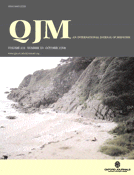Amazoniac
Member
"It is important to remember that absorptive and secretory processes operate simultaneously and that net solute movement represents the sum of several transport events. An oral rehydration solution sodium concentration sufficient to result in net sodium absorption is therefore unnecessary for effective rehydration. On the other hand, both sodium and water secretion occur when solutions with low sodium concentrations (23-49 mmol/l) are perfused in normal and secreting rat small intestine.[35-38] In addition to being ineffective in promoting water absorption there is also evidence in animals,[36] and from clinical trials[18,39] that these low sodium solutions may result in hyponatraemia. It therefore seems reasonable to contemplate an oral rehydration solution sodium concentration between [] extremes, aiming to promote adequate water absorption without adversely affecting sodium status."
"Introduction of the WHO-ORS to developing communities has saved millions of lives and its use in accordance with WHO recommendations should be encouraged. In developed communities such as the United Kingdom, however, where the aetiology of acute diarrhoea differs and its consequences are usually less severe, we suggest that use of the 90 mmol/l sodium solution is inappropriate and that one containing approximately 50-60 mmol/l sodium with 90-111 mmol/l glucose should be recommended."
- Milk salts and their interaction with caseins"Introduction of the WHO-ORS to developing communities has saved millions of lives and its use in accordance with WHO recommendations should be encouraged. In developed communities such as the United Kingdom, however, where the aetiology of acute diarrhoea differs and its consequences are usually less severe, we suggest that use of the 90 mmol/l sodium solution is inappropriate and that one containing approximately 50-60 mmol/l sodium with 90-111 mmol/l glucose should be recommended."
- High-sodium ORS (90-120 mmol/L)
- Mid-sodium ORS (50-60 mmol/L)
- Low-sodium ORS (30-35 mmol/L)
I doubt that there aren't other factors in milk that promote optimal absorption and utilization of water, but perhaps some people could benefit from having it more concentrated in sodium.
Sodium equivalences:
- 1 mmol = 1 mEq
- 10 mmol = 230 mg
- 60 mmol = 1380 mg
(Yeah, it's a crutch.)
Since milk will contain about 20-25 mmol/L, additional 30 mmol/L would be needed.
Too much bull**** with milk isn't good, leads to cappuccinosis. Reacting it with vinegar should work.
It's whatever it takes of vinegar to neutralize 1/2 of a teaspoon of bull**** for every liter of (skim) milk.- Baking Soda Can Settle the Stomach but Upset the Heart: Case Files of the Medical Toxicology Fellowship at the University of California, San Francisco
"According to [Arm et Hammer], each teaspoon of baking soda contains 4.8 g, corresponding to 59 mEq of sodium and 59 mEq of bicarbonate [1]."
Last edited:

